Which Architectural Styles Blend Well Together?
I've seen a lot of posts that point out the incompatibility of some styles (I can't imagine what a Victorian crossed with a Mid-Century Modern would look like, for example...), and I'd like a little education on acceptable hybrids, if y'all would be so kind. :-)
Something like:
- Queen Anne Victorian x MCM = No (and why)
- Queen Anne Victorian x Craftsman = Yes (and why)
- etc
- etc
- etc
Awhile back, I ran across the website of a local architect (not my guy), where he married French Eclectic with our vernacular Central Texas Hill Country, and it got me thinking.
So, thoughts...? Which styles work and which don't? And why?
A huge thank you to anyone who responds. <3
Comments (44)
tendrac
4 years agoThis is a timely question. We are currently in the process of building a "new-old" home where two architectural styles have been blended together. Our home is an "antebellum-inspired" Greek Revival with Italianate accents (ex. deep eaves; colonnaded porch with an arcaded patio beneath; low-pitched hipped roof with a cupola; and, a one-story front entry porch that extends 3/4 of the front facade).
Personally, I think that Greek Revival and Italianate work well together because both are Romantic styles and they share some architectural details (i.e., columns, low-pitched roofs, ornate cornices). In the south, where we are building, it is not uncommon to see the two styles used together. But, for the most part, most of the homes that we used for inspiration were predominantly one style or other.One Devoted Dame thanked tendracRelated Professionals
Oak Hill Architects & Building Designers · Shady Hills Design-Build Firms · Fort Worth Home Builders · Puyallup Home Builders · Spanish Springs Home Builders · Tustin Home Builders · Boardman General Contractors · Bowling Green General Contractors · Hamilton Square General Contractors · Las Cruces General Contractors · Monroe General Contractors · Olney General Contractors · Selma General Contractors · Stoughton General Contractors · Winfield General ContractorsOne Devoted Dame
Original Author4 years agolast modified: 4 years agoI am very much attracted to Mexican/Spanish Colonial architecture. As I understand it, Central TX Hill Country's roots include Spanish Colonial, so obviously a CTHC/SC mutt would be pretty, lol.
We also have a bit of Czech and German cultural influence around my area, yet I'm not sure if German and Spanish play well together...? Not that I have any idea what "German" architecture looks like, but the question still plagues me, how is a happy hybrid created? What are the "rules"?
[Side note, perhaps of some relevance: I'm currently reading -- at ARG/Mr. Doug's suggestion -- Jacobson, et al's, "Patterns of Home" and am fascinated by the guiding principles of design; is there a similar theory/system for blending Styles?]
We can say that Rule #1 is Start with Vernacular and History... But in some/other parts of the country, there are more varied styles (and longer history), so how do we know what works and what doesn't?
Clear as mud??? lol
tendrac
4 years agoI think that I agree with starting with history and, possibly, looking to nature (that's my geeky side speaking). When I was creating ideas for my own home, I found myself delving into the history of architecture--not just for my area but for different cultures and time. I came across information for why certain things came into vogue and why others fell out.
For our project, I delved into a mixture of information from Egyptian design to vernacular. In doing so, I, also, learned about architectural styles that I had little-to-no interest in applying to our own project. The strangest thing that I took away from the experience is that there is a rhythm for why many designs and architectural styles had staying power until this day, and why others did not.
If you are interested in attempting this endeavor on your own, you will probably need to attack the project as if you were a student of architectural design and history (i.e., reading historical resources similarly to the one that your quoted). I think that this is the only way to get a better grasp of why some things can work together while others cannot. And, also, I found that science (i.e., geometry and physics), resources, and societal attitudes seem to play a big part in the equation.
Regarding if German and Spanish play well together: For this, I would say that you should study the details and back-story each style. Perhaps, try to learn why those things were done and then see if there is any overlap between the two. In doing so, I think that you then be able to determine if they can work together.
Just my "layperson" opinion. HTH. : )
P.S. I also agree with Virgil. That's how we designed our home.One Devoted Dame thanked tendracOne Devoted Dame
Original Author4 years ago[...] both are Romantic styles and they share some architectural details (i.e., columns, low-pitched roofs, ornate cornices) [...]
Okay, so Rule #2 could be Shared Details. Gable roof styles can more easily blend with other Gable styles; Hips should stick with other Hips. Casement windows shouldn't really mix with double hungs. Etc., etc., etc.
Yes?
I'm actually not looking for a specific marriage of styles, just a general idea of how a good partnership is created. We often hear folks describe their new builds here as "Modern Farmhouse with touches of [Craftsman, Coastal, Rustic, Mountain, Whatever]" and sometimes, it's pointed out that the house CAN'T be what is described. I'm curious as to why. There have to be (unspoken?) guidelines....
User
4 years agolast modified: 4 years agoArchitectural styles did not appear fully formed in a vacuum. They evolved sometimes by gradual modifications from a popular style (Federal/Adam), sometimes by the adoption of much older style elements (classical elements) and sometimes as a cultural reaction against previous styles (Craftsman) or due to some special event that captured the interest and imagination of the public (Greek Revival). Therefore, mixing elements of different styles is not only a matter of finding compatible forms, materials and details but understanding the cultural concepts, attitudes and events that were the driving force behind these styles.
To use your example, what we know as the American Craftsman style was influenced by the English Arts & Crafts movement that rebelled against industrialization and late Victorian architecture (like the Queen Anne style). The Craftsman style promoted a more natural blending of the house with its site with earth colors, natural woods, simpler roof shapes, easy access to the outside and imaginative detailing created by wood and metal artisans.
If I were to try to combine the Craftsman and Queen Anne styles, I would be befuddled by contradictory principles and wouldn't know where to start.
In the 60's you could buy a kit to put a Rolls Royce hood and radiator grille on your VW bug. It was joke ... wasn't it?

Rather than trying to copy and combine the forms of historical styles, learn the principles and ideas that gave birth to those styles and study how they varied over the period they were popular in different regions and in different building configurations and then let those images pop up in your mind when you are in a situation where you need them.One Devoted Dame thanked UserUser
4 years agoFrench Eclectic is not an historic architectural style; its a category of recent American houses that uses elements of public and private French buildings from many centuries . A more appropriate term would be "French Inspired".
One Devoted Dame thanked Usertendrac
4 years agoYes and no for mixing of details.
In the case of casements, they can be mixed with other windows. They actually precede sash windows. So, it would not be strange to see them used together.
And, I completely agree with what RES has stated.
In my research, I found that societal attitudes or ways of thinking played a big part in architecture. The other thing that I noticed is that many people of the past were better endowed with an understanding of art, science (for that time), and history.
Also, in the same vein, many understood the purpose of an entablature or cornice. . .or the purpose of brackets. . .columns. . .or, why stone shouldn't (or, couldn't) be floated freely. . .and, why a farmhouse is a farmhouse.One Devoted Dame thanked tendracOne Devoted Dame
Original Author4 years agolast modified: 4 years agoIf I were to try to combine he Craftsman and Queen Anne styles I would be befuddled by contradictory principles and wouldn't know where to start.
Ooooh, this is good!
I think this is at the heart of my question. At their foundations, some styles are compatible and some are not, because their respective underlying design principles are complementary or contradictory. An organic, ornamented Storybook cannot be combined with a boxy, minimal Brutalist, because they don't share philosophies in culture/living, form, massing, ornamentation, etc.
Right?
So, if we're deciding which styles are compatible and which are not, we first should consider the basic ideology behind *why* the style is what it is; how it was born.
[Sorry, I was posting before reading everything, lol.]
Edited to add: And when determining what style my own house will be, I should look at vernacular architecture (which is really hard to find, in seas of style-less subdivisions), what my own "house attitudes" are, my family's personal cultural history, etc.
tendrac
4 years ago@ODD
That is the way that I saw it to be, also. . .though, you stated it much more succinctly.One Devoted Dame thanked tendracAnglophilia
4 years agolast modified: 4 years agoOne needs to remembrr that developers today put in all the “trendy”“ catch words today,...all in one house. How many times have we heard someone post on GW that their house is a “modern coastal farmhouse with industrial touches”. Huh? How many farm houses has one ever seen on the coast in an industrial area? An old factory up on a bluff with a sea view, that some is now using as a farmhouse. In what parallel universe? But remember...it sells.
One Devoted Dame thanked AnglophiliaMark Bischak, Architect
4 years agolast modified: 4 years agoI was in on a design (I am not accepting credit or blame) of a home in northern Michigan that had a "Northern Michigan Cottage" exterior and a "Southwestern Pueblo" interior. I warned the client that they may experience difficulty when they go to sell the house, but they were willing to take the risk. Years later I ran into the client in a sporting goods store and he told me they sold the house and had some difficulty because of the mixing of the designs as I predicted.
I see it as a successful project because it was what the client wanted and the styles had a defined separation in a physical sense. All together not something I would recommend doing again.
I think to successfully blend architectural styles, an architect with strong design capabilities beyond architecture would take characteristics of different architectural styles and integrate them with purpose to create a visually pleasing and well functioning piece of architecture.
One Devoted Dame thanked Mark Bischak, ArchitectMark Bischak, Architect
4 years agoIn a similar vein, when I was young I remember my parents taking me to the home of a friend of a friend of theirs that the exterior of the house would be described as a unkept "Tar Paper Shack", but the interior was neat and tidy modern interior of what you would expect to see in a model home. Obviously the Tax Assessor never sees the inside of homes.
Virgil Carter Fine Art
4 years agolast modified: 4 years agoA cautionary comment or two:
--Be cautious about a deliberate effort to combine and blend two distinct styles of architwcture since doing so successfully likely requires a large amount of knowledge of architectural history and a good understanding of why and how. Otherwise one runs the risk of creating another 24-flavor builder's house;
--Be cautious with the book Pattern Language and its siblings, which break residential architecture design down into discrete components as if architectural design was simply a formula with a series of elements added to achieve success. While many of the individual elements in the book are worth noting, what the book doesn't reflect is that architectural design, like any creative effort, must also have a strong ingredient of creative insight and imagination. Without this, design actually does become a rote and lifeless process.
Sidenote: I understand that Berkeley professor Chris Alexander had his graduate classes working on contributions to the book for ten years or so before publishing the book.
One Devoted Dame thanked Virgil Carter Fine ArtA Fox
4 years agoI think what is utmost important over anything is a consistency with how the house is detailed and what design rules it employs throughout. This is ultimately more important than trying to make it any particular style or combination of styles.
Our 1920s house fails to fall squarely into any of the prescribed styles of the time but it is so consistent in it's design that it doesn't have to be any one particular thing. It has a plan, symmetry, and balanced arrangement of double hung windows typical of center hall colonials, a low pitched, deep eaved, hip roof that sits just above the windows typical of the prairie style, but the exposed rafter tails and barrel clay tiles are more Italian renaissance revival. The sun room with bands of casement windows and continuous window sill wrapping all three sides is also more prairie style, as is the broad water table that the house sits upon. The there's the entrance portico with neoclassical Doric columns, broken pediment, triglyphs, egg and dart molding in the neoclassical style, with an old English style crest with knights helmet and sword set in the middle of the broken pediment, and a front door and stained glass that looks like it was inspired by the English arts and crafts.
The influences for the design were clearly all over the place. But it's the repetition of the same shapes and details all over the exterior and interior, the use of a simple pallet of materials and simple house shape that makes it work.
So yes, you can mix casements and double hung windows, you can mix materials, styles, etc, etc as long as you have an eye for what you are doing, and understanding for where these elements came from, and an ability to weave the same ideas throughout a house and ability to step back and realize that there are a few elements too many. For instance, I am less bothered by the use of jerkinheads on house styles that never historically had them, than I am when one or two is used randomly just because, along with 5 other roof forms. This is where the majority of new houses fail. They are chalked full of too many contradictory ideas and forms, usually all stuffed onto the front elevation as if it were a set piece representing an entire village.One Devoted Dame thanked A FoxUser
4 years agolast modified: 4 years agoSave yourself a lot of time and work by hiring an old architect who will have studied architectural history for years, traveled to see the artifacts of other cultures, not been influenced by the internet. learned the nature of materials and building systems and passed 4 days of exams to become licensed.
I remember Alexander as an early computer geek who believed he could reduce design to a series of patterns. I found his books tedious and uninteresting although the more recent book by his former associates is a good one.
One Devoted Dame thanked UserVirgil Carter Fine Art
4 years agoI agree about Alexander's book. Architectural design is much more than just a recipe where one of those, three of these and a pinch of that are added together and baked at 350 degrees for an hour.
tendrac
4 years agolast modified: 4 years ago@ODD
" And when determining what style my own house will be, I should look at vernacular architecture (which is really hard to find, in seas of style-less subdivisions), what my own "house attitudes" are, my family's personal cultural history, etc. "
It has been a little over 2 years since we began our process of "selling our home so that we can buy resell but deciding to build because the "New Traditional" homes in our area leave much to be desired when it came to aesthetics and allocation of spaces."
Truthfully, I cannot say that there was a specific road map that led to us designing an architecturally-blended home based strictly on elements from those aforementioned styles. In our area, there is currently a small shift being made towards "Tribute Homes" (i.e., homes that give a nod to the past by attempting to incorporate classical elements), away from "Modern Farmhouses." I guess that you can say that they are the new "vernacular" styles, but they were not the driving force for behind our plans since many of the elements that we have used in our home design do not seem to be in vogue for these Tribute Homes.
When discussing our project, I like to say "we" because it could not have come to be without both my partner and our architect's input. But, if I am being honest, I would say that I am the brains behind the design. Growing up in the Southeast, I lived in and around many historic homes. The most memorable was my grandmother's 1915 Craftsman Four Square. But, also, in her neighborhood were many architecturally disparate homes. As an adult, I constantly used those experiences to gauge the aesthetics of the homes that we have lived in. Unlike myself, my partner didn't dwell much on the specifics of architecture--though, he has always been in agreeance with me in regards to avoiding homes with overwhelming McMansion details.
So, regarding "house attitudes" and family's personal cultural history, I would say that in my situation that only one member (i.e., myself) was the driving factor for how and why our house design was determined.
Another thing that I would like to add is that when we began this journey, I sat down and did what many people on this site have attempted to do: create my own home and floorplan. In the end, I have come to agree with many that it should not be attempted unless one has an understanding or penchant for design and details. Now, in my case, this makes me sound like a hypocrite because I am the designer of my house; I am the one who created the the interior and exterior but with the assistance of our licensed architect.
Unlike many of the scenarios which have been memorialized here on Houzz, my story is quite different. After being unable to find what we wanted in resell, I decided to put to paper what I was seeing in my head. The first architect with whom we spoke worked solely for a spec builder who did small-scale development. Both were a VERY poor fit for my personality and our style. In my opinion, this architect was a one-trick pony with little-to-no knowledge about the architectural details that I wanted to employ for our project. The next architect we spoke with is quite renown and owns a large firm. He is EXTREMELY experienced in classical architecture and had a nice price tag to go along with it (20% of the build cost). Unbeknownst to me, my partner sent him what I had "sketched" and verbally described. They spoke over the phone, and he offered--for a flat fee--to professionally render my creation (without owning the rights to it) so that I could take it to a drafter, who would create the construction plans.
Well, at that time, this is not something that I wanted to do since I was not professionally trained for this and knew that I understood very little about the elements involved in architectural design. During that time period, I bought books (new and old) any and everything that I could to help me learn the verbiage, and understand the "rhythm" of classical architecture. By nature, I am an autodidact. . .and, probably a whole bunch of other similarly related things. But, I am also stubborn and steadfast. I learned what I could learn, but maintained my initial plan to find an architect who was interested in assisting us with--not wanting to own--our project. By the third attempt, we found our guy.
In the beginning, the road was truly bumpy but, so far, has turned out quite gratifying. Because this reply is already quite long, I have intentionally omitted many details. I understand that there is a strong division here on Houzz between some of the professionals and "laypersons" concerning self-design. Strangely enough, I have a difficult time siding with either based on my own experience and project. The way I see it, experience is priceless but knowledge (and, wisdom) is key. If one sets their mind to something, it can be achieved. At the same time, there must be an innate component to help drive the success. I am a science person (field of study and career) but I've always had an unappreciated and repressed gift for being able to draw and manipulate images in my mind. Up until recently, I never found much use or joy for the skill. But, I know that without it, there is no way that I would have been able to accomplish what I have with designing our home.
So with that said, if you have the drive and talent, then give a go. If not, then definitely seek out someone with experience in the area of architectural design that you find most appealing.Again, HTH.
One Devoted Dame thanked tendractendrac
4 years ago@RES and Virgil
I agree that it is not very easy. . .and, I have a new-found respect those who can do it.
Another thing to be aware of, and that caught us off-guards, is that it is not a cheap option either. To do things right, you will need to be willing to understand the costs that are involved for the talent who will help bring the project into fruition.
When it is all said and done, we will be probably 70% over our desired, initial budget. And, this does not include the skill-set of the master craftsmen who existed 50 years ago, let alone, 100 years ago.One Devoted Dame thanked tendracOne Devoted Dame
Original Author4 years agolast modified: 4 years ago--Be cautious about a deliberate effort to combine and blend two distinct styles of architwcture since doing so successfully likely requires a large amount of knowledge of architectural history and a good understanding of why and how. Otherwise one runs the risk of creating another 24-flavor builder's house;
Most definitely! :-O I'd rather "just pick one" and do a single style. I like theme-ing things. I think the folks who designed Disneyland were probably my personality type, lol.
--Be cautious with the book Pattern Language and its siblings, [....]
I will freely and totally admit that, as I go through "Patterns of Home," I frequently fall victim to, "It's a DANG good thing I'm hiring someone to do this for me, because there are unbelievable numbers of ways to mess this up."
And, knowing myself, I will continue to read about architecture long after the house is finished, so taking on an endeavor like this -- without professional assistance -- is not something I'm interested in, since I don't like beating myself up. I have a few talents and my favorite wells of knowledge aren't exactly shallow, but I know that I am lacking in architecture. It's too expensive for me (financially and emotionally) to take on solo. :-D
I think what is utmost important over anything is a consistency with how the house is detailed and what design rules it employs throughout. This is ultimately more important than trying to make it any particular style or combination of styles.
I totally see what you're saying here... Yet I know that, for me, if I don't have an identifiable style, I'm not going to be happy with it. ;-)
Save yourself a lot of time and work by hiring an old architect who will have studied architectural history for years, traveled to see the artifacts of other cultures, not been influenced by the internet. learned the nature of materials and building systems and passed 4 days of exams to become licensed.
Oh, good!!! This is exactly what I'm doing! :-D I interviewed 3 architects, and my favorite is a bit over 70 years old, with over 40 years of experience under his belt, and when I asked what his favorite project was, he simply replied, "India." I'm really excited to be working with him.
The whole reason I'm even posting this Style-Blending question is because he asked me to collect images of "what you want this thing to look like." I like aspects of both Hill Country and Spanish Colonial, but didn't want to include examples of both styles if I really should only select one. :-/
[Edited to add: I actually like several different styles, English Tudor and French Norman, in addition to Spanish and Hill Country... But obviously a house designed with 4 different styles is NOT gonna happen!]
The next architect we spoke with is quite renown and owns a large firm. He is EXTREMELY experienced in classical architecture and had a nice price tag to go along with it (20% of the build cost). Unbeknownst to me, my partner sent him what I had "sketched" and verbally described. They spoke over the phone, and he offered--for a flat fee--to professionally render my creation (without owning the rights to it) so that I could take it to a drafter, who would create the construction plans.
I had a similar offer, from my second interviewee, but I am incredibly uncomfortable going this route. I have too many little ones to care for at the moment, to seriously entertain this idea.
To do things right, you will need to be willing to understand the costs that are involved for the talent who will help bring the project into fruition.
Sigh. This is, sadly, the truth regarding so many things in my life. If I want to do it right, it's gonna cost me. And if I don't "do it right" I feel like it's a waste of money. Grrr.... It's been my curse all my life, lol.
Virgil Carter Fine Art
4 years agolast modified: 4 years agoWell...you might look at it like this: a custom home may be one of largest expenditures you (or me) will ever make, and it may be something that you and your family spend a long, long time using.
That's the sort of thing you want to invest in properly to get the greatest value in return.
Good luck! :-)
One Devoted Dame
Original Author4 years agoThat's exactly why I started this whole "build a custom house" mess, Mr. Virgil, lol. I want it done right, so that we have fewer problems in the future. When I first moved here, *everyone* -- including realtors -- told me that all houses in the area have foundation problems, and I'm like, "SAY WHAT??? WHY???"
Crickets.
My family's future will likely enjoy very-long-term multi-generation status, and I don't want to worry about fixing a huge foundation problem in 10-15 years. Or, worse, 30-40 years. If we aren't in the house that long, that's okay, because building a good house will serve the NEXT family well, and the family after that. I want to create things that endure.
Anglophilia
4 years agoIt's far easier and usually more successful to blend different periods/styles of furniture in the house, rather than the house itself. Good design of almost any period usually "plays well" with one another. I don't like a house that is decorated all in one period - looks like a visit to Colonial Williamsburg, which while pretty, doesn't seem very "homey". I could add an Eames lounge chair to my library tomorrow and it would work in my traditional house filled with 18 century period pieces, 19th century pieces styled like 18th, and a bit of Biedermeier thrown in for good measure. It works.
One Devoted Dame thanked Anglophiliaworthy
4 years agolast modified: 4 years agoColonial Williamsburg, which while pretty, doesn't seem very "homey".
Or, it turns out, very authentic as at least one major building was built from scratch in the way the original architects should have done it.
One Devoted Dame thanked worthyUser
4 years agolast modified: 4 years agoThe architectural styles that allow the most variety and freedom and can be adapted to modern house plans are the Colonial Revival Style, the Shingle Style and the Free Classic Queen Anne Style which are all somewhat related. The most restrictive styles are the Romantic styles: Greek Revival, Gothic Revival, Italianate, etc. as well as the Craftsman and Tudor styles.
But these styles are generally 1 1/2 or 2 stories and dont adapt well to sprawlng one story houses but then neither do floor plans since they have a low ratio of exterior walls to floor area. I've never been asked to design or renovate a one story house so I've always had the luxury of a large mass to work mould and my favorite architectural toy: the roof rake.
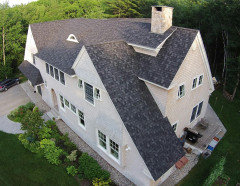
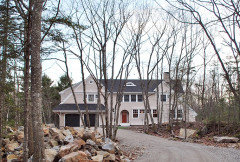
The Shingle Style can be true to the style and yet original and unique.tendrac
4 years agoI had a similar offer, from my second interviewee, but I am incredibly uncomfortable going this route. I have too many little ones to care for at the moment, to seriously entertain this idea.
I think that you are wise for seeing it that way. In hindsight, I am happy that I stuck to my plan of working with someone who has experience. Like you, I have a couple of littles at home in addition to a middle, and I happen to wear the hat of both teacher and waitstaff. And, I can honestly say that the experience has tested my patience. We broke ground in July but, even before then, I had almost surrendered to the idea that resell would have been a better option.
Though I am now over most of those emotional hiccups, I still find that sometimes it is quite difficult due to the collaborative nature of our project because of my desire to take a leading role.
This is, sadly, the truth regarding so many things in my life. If I want to do it right, it's gonna cost me. And if I don't "do it right" I feel like it's a waste of money.
Definitely, this!
It was painful to see the pre-construction bill (we spec'd 98% of everything) and, then, go on to witness that bill increase due to tariffs, human-errors / omissions. Then there is that aspect of inexperienced professionals wanting to charge for on-the-site learning. And, to think we've only just finished wrapping the house! I am already feeling a bit of dread about the finish carpentry. . .
If you can swing it (and, need it), a good team could help you avoid making costly mistakes. So far, on our project we have worked with two engineers because, you know, we are trying to reinvent the past and, it seems, we are asking people to walk water. j/k Despite a few errors, the expense for the expertise has been worth it.
Oh, and definitely get a 3D rendering, if at all possible. In the beginning, I could not understand the value of it but my SO was insistent. Once he had it done, I saw how helpful it could be. . .and, it gave me a better perspective of how two people can see and interpret visual details quite differently. The other thing that it provided were viewpoints from various topographical points on our lot.One Devoted Dame thanked tendracUser
4 years agolast modified: 4 years agoI should clarify one thing: "blending" is not a word I like in conjunction with architectural design.
It just seems like it would devalue the things that were being blended.
"Blend: to combine or associate so that the separate constituents or the line of demarcation cannot be distinguished"
What you should be trying to find is a major idea or element that can be reinforced by minor ideas or elements in order to create a hierarchy of ideas and elements which is pretty much the basis of all good architecture.
Picasso is reported to have said: "Good artists borrow, great artists steal." Whether he said that or not, when you know the Greek Revival style well enough, you will be able to work with it as if you had invented it.
User
4 years agoThe reason for attending architecture school is not to learn good design but to learn how to think about design so you can survive in an environment where there is never enough money or time to find perfect solutions. What you will realize afterward is that you learned the most from your classmates as you watched them struggle and eventually succeed. By the time you leave you have each stolen as much of your classmates' natural skills and talents as you could.
One Devoted Dame
Original Author4 years agoThe Shingle Style can be true to the style and yet original and unique.
Shingle was my first love, when I started reading about residential architecture. It could easily have a touch of whimsy without looking juvenile.
But like you mentioned, it *has* to be 2-story. I love the look of a handsome 2-story house, but I don't care for living in them (hate cleaning stairs, lol). And, well, a Shingle might look weird in central Texas.... :-(
And, I can honestly say that the experience has tested my patience.
Yeaaahhhh... Another area I tend to gravitate toward (mom of 6, aged 13 down to 1) -- Looking for ways to increase my patience! Practice makes perfect; I need a lot of practice, apparently. ;-)
Though I am now over most of those emotional hiccups, I still find that sometimes it is quite difficult due to the collaborative nature of our project because of my desire to take a leading role.
I lean more submissive, naturally, only taking leadership roles when it's clear that everyone else around me is either completely uninterested or completely incompetent. I am happy to let someone else take over. Mostly because I'm in charge of 6 other younger lives, and they're *intense.* lol
If you can swing it (and, need it), a good team could help you avoid making costly mistakes. So far, on our project we have worked with two engineers because, you know, we are trying to reinvent the past and, it seems, we are asking people to walk water.
lol
I totally get this. I basically view this entire endeavor like this: If I can't afford to pay for other people's knowledge (since I don't have the time to learn all of this myself; would've had to have started much earlier than late 30s with 6 kids, lol), then I can't afford it, period.
My architect budget was $20k. I had to increase it to $25k, because the guy I want to hire charges 3%-5% of construction, so I'm assuming the larger fee. I'm pretty much guessing everything will be like that; at least 20% more than I thought it would be.
Oh, and definitely get a 3D rendering, if at all possible. In the beginning, I could not understand the value of it but my SO was insistent.
I think my husband would love to see 3D renderings. I'm kinda neutral on them... I can visualize pretty well, but if he would like to see them, no problem.
What you should be trying to find is a major idea or element that can be reinforced by minor ideas or elements in order to create a hierarchy of ideas and elements which is pretty much the basis of all good architecture.
What are good examples of these ideas or elements?
Is it enough to say, for instance, "I want a symbolically 'Catholic' house?" And then pick an historically Catholic style for my area (Spanish), use windows in groupings of three (Trinity), roses (Our Lady), etc.? Or should the Big Idea be something else?
Virgil Carter Fine Art
4 years agolast modified: 4 years agoThe "Big Idea" is just a term for organizing concept.
An organizing concept or Big Idea is the central, guiding idea which drives the design and all the significant design decisions.
It's hard to find an organizing concept which works and can help with significant decisions. It takes some time to explore and test one idea after another until one is found which truly works for most things.
A Catholic house is certainly a good example.
Hopefully your architect understands and can work with you to find and develop your Big Idea.
Good luck!
One Devoted Dame thanked Virgil Carter Fine Arttendrac
4 years agoLooking for ways to increase my patience! Practice makes perfect; I need a lot of practice, apparently.
This made me chuckle! Just a couple of days ago, my 6 year-old was making demands of me--as usual--while I was busy undertaking other tasks. So, just to quiet her up for a second (at least, I thought), I decided to speak the golden words to her: "Please, be patient."
She immediately gave me a blank stare and says in a gentle voice: "I am patient." Feeling satisfied--cause I thought I'd finally tamed our "wild one"--my mind began to relish the moment. Then, less than a millisecond later, I hear a loud sigh. I turn to my right, and see her giving me an even deeper stare, which is followed by another sigh and her scooting closer to me so that I can hear it (and, feel her breath near my ear).
I am still wondering if she and I have the same definition of "patient." Oftentimes, I think that she may prefer the noun instead of the adjective. . .and, expects me to be at her beck and call. My mom has told me that she is just like me. . .and, I've been wondering lately if she is here to teach me something or to be payback for my past. If the former, then perhaps I should employ her tactics during the remainder of our build. Something about the breathing near my ear got me moving. lol.
Anyway, ODD, I do hope this stage of your project goes well. Sounds like you have given it quite a bit of forethought. . . and, it seems that you have found an architect that is a good fit for you, your family, and your project.One Devoted Dame thanked tendracOne Devoted Dame
Original Author4 years agoIt's hard to find an organizing concept which works and can help with significant decisions. It takes some time to explore and test one idea after another until one is found which truly works for most things.
[...]
Hopefully your architect understands and can work with you to find and develop your Big Idea.
You know what's funny? I keep having these little epiphanies, like with what you just wrote above, that convince me of the "journey"-type nature of building a house. What seems so simple at first glance -- building a house -- can (should?) be a complex, evolving entity, far before ground is broken. The exploration of concepts sounds like an exciting experience all by itself. It'll be cool to see where I end up.
My mom has told me that she is just like me. . .and, I've been wondering lately if she is here to teach me something or to be payback for my past.
I'm in the teaching camp; my mom is in the payback one. lol Parenting offers tremendous opportunities for growth, if folks are willing to embrace it that way.
worthy
4 years agoAll that agonizing! Here's our famous local take on mixing styles.

Style mixing par excellance. 760 Maybourne Ave., Toronto
Sold fall 2018 for C$750,000, to be demolished for a new home.One Devoted Dame thanked worthyMark Bischak, Architect
4 years ago" . . . to be demolished for a new home."
All across the country flags will be flown a half-mast . . .
One Devoted Dame
Original Author4 years agoHere's our famous local take on mixing styles.
Oh, my.
Just how many styles are represented there?!?
- One Devoted Dame thanked User
One Devoted Dame
Original Author4 years agoMr. RES, you live in a *fantastic* part of the country! You have access to so many beautiful styles of houses. I love the chimneys, the window boxes, the vines on the turret, the rounded edges of the roof (no idea what it's called, but the effect is of a thatched roof). That is an adorable house! <3
User
4 years agoThe house is in New Brunswick, Canada about 400 miles north of me but there are a few of these near me as well.
The wood shingles on the roof wrap around the rakes like thatch.
One Devoted Dame thanked UserOne Devoted Dame
Original Author4 years agolast modified: 4 years agoThe house is in New Brunswick, Canada about 400 miles north of me but there are a few of these near me as well.
I could drive 400 miles in a north easterly direction and still be in Texas!
I've made that drive [edited to add: I can't tell east from west, apparently; I've driven north westerly lol], and the historic architecture is mostly Victorian, Craftsman, and a few small Tudors. Lots of folk Victorian around here. Which is pretty, no doubt. It was just surprising to me; I expected more "Texas ranch," whatever that was, lol.
[Edit #2: I could be in another country if I drove 700 miles down, and through, Brownsville. :-D Okay, okay, I could go to Mexico via Laredo at 250 miles, but 700 is so much more impressive.]
Mark Bischak, Architect
4 years agoI could drive 400 miles in a north easterly direction and be wet and in another country.
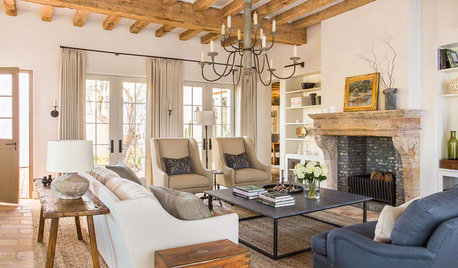
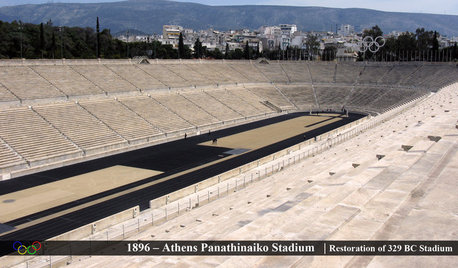
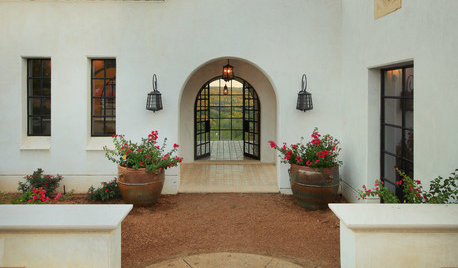
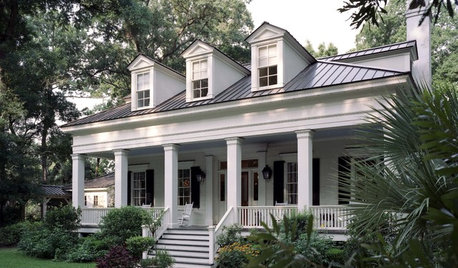
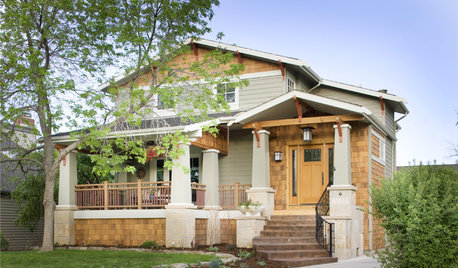

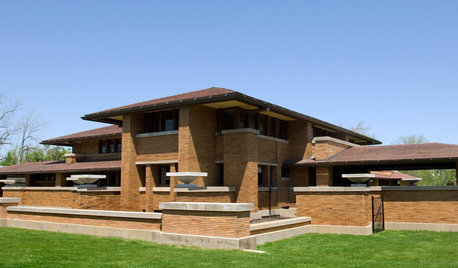
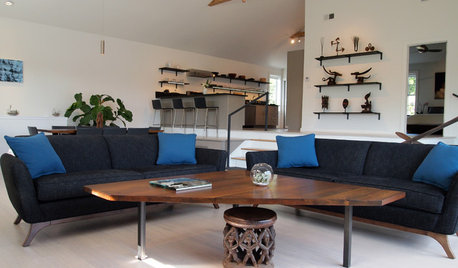
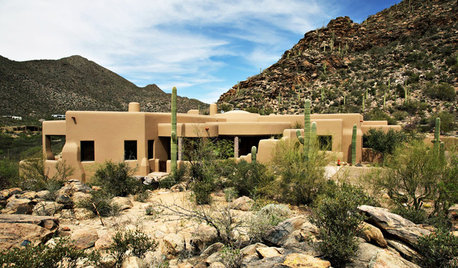
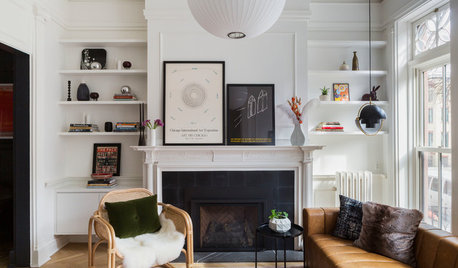






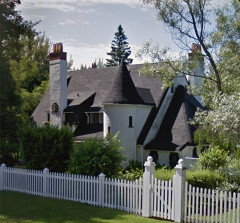

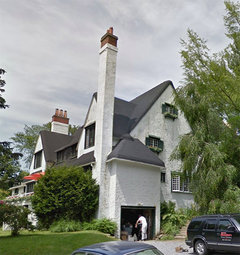

Virgil Carter Fine Art